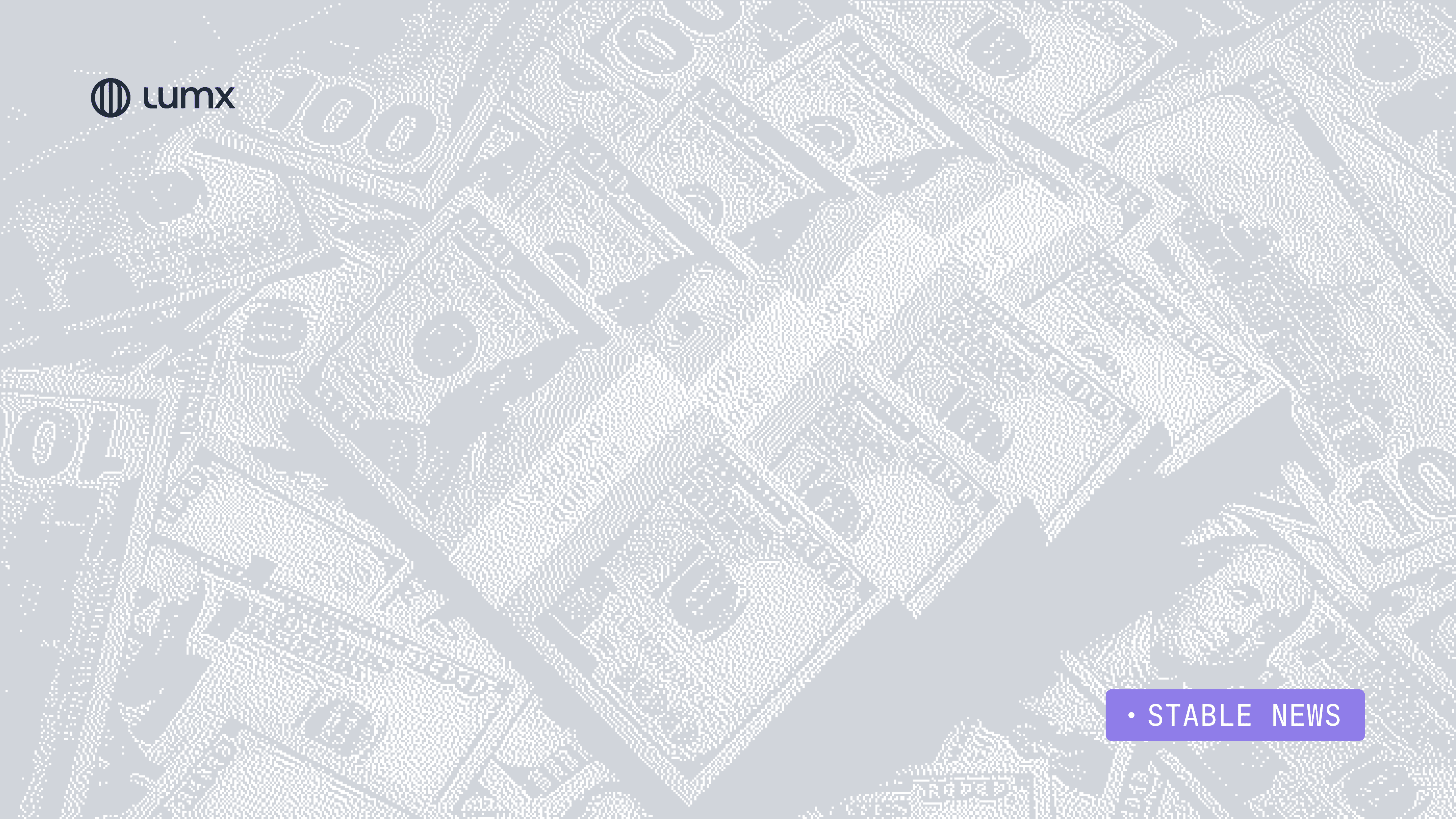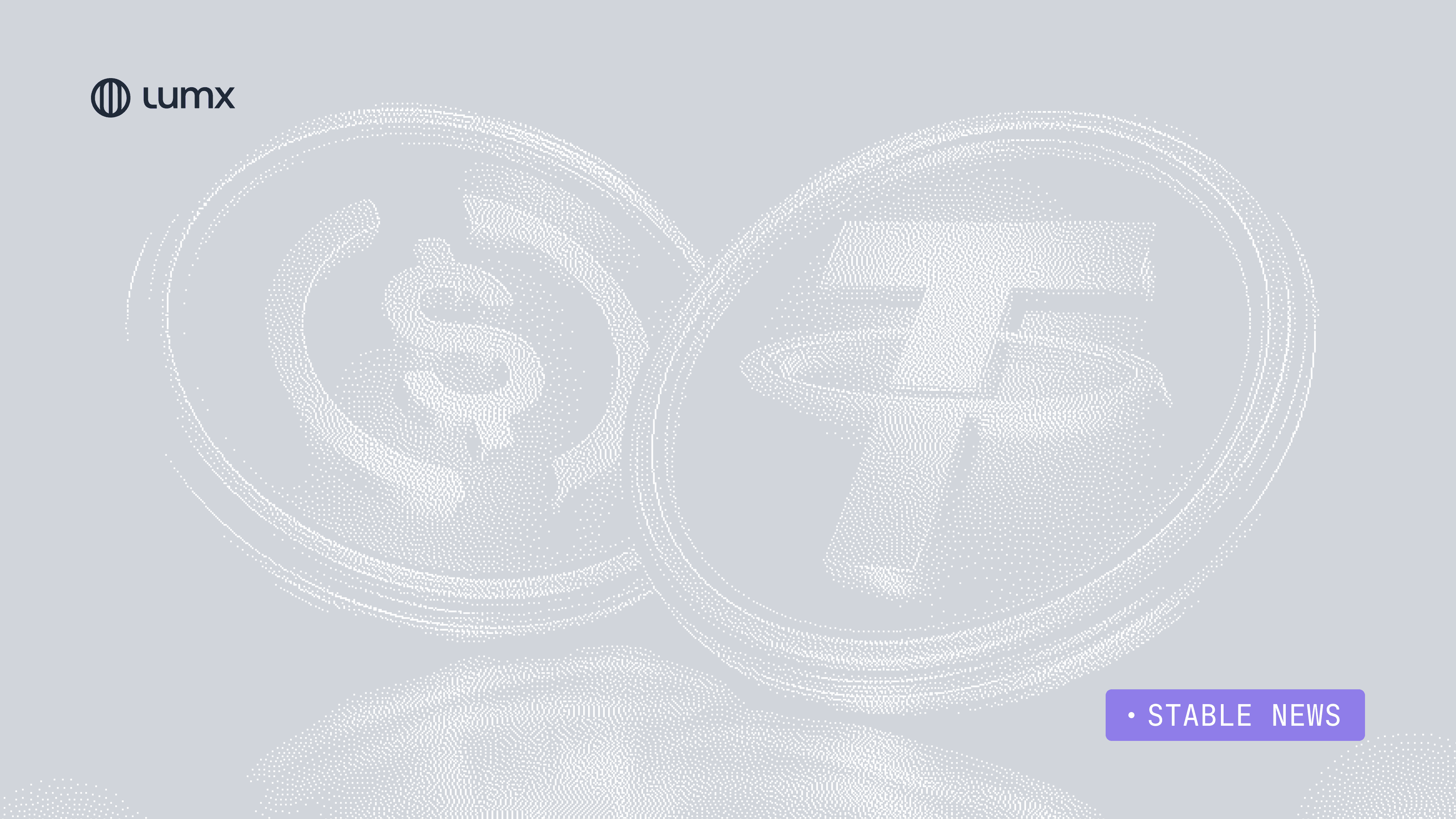Stable News is Lumx’s weekly curation of the most important developments in the stablecoin space and their impact on the global financial system. In this edition, spanning the Middle East, Asia, Europe, and the U.S., we explore how institutional adoption, commercial integrations, and regulatory frameworks are fueling the construction of a new monetary architecture.
Reading time: 6 minutes
Emirates and Crypto.com Sign Deal for Crypto Payments
Emirates has signed a preliminary agreement with Crypto.com to allow passengers to pay with cryptocurrencies through the exchange’s platform, with a rollout expected in 2026. The airline follows the footsteps of other regional players like Air Arabia, which already accepts AE Coin.
This move aligns with the UAE's ambition to establish itself as a regulated crypto hub, with initiatives like VARA and DMCC already hosting hundreds of digital asset companies. Commercial adoption in the aviation sector positions crypto not just as an asset but as a daily-use payment tool.
Why it matters:
✅ Confirms that regulated sectors like aviation are ready to accept crypto, testing usability and compliance.
✅ Highlights the UAE's consolidation as a strategic hub in the global digital asset ecosystem.
✅ Signals that mainstream adoption requires major enterprises to open secure and scalable commercial pathways.
OKX Joins Paxos USDG Network, Strengthens Regulated Stablecoin in Asia–Europe Corridor
OKX, with 60 million users, has integrated Paxos' USDG into its platform, bringing it into the Global Dollar Network ecosystem. Already MiCA-compliant in the EU and backed by DBS in Singapore, USDG is expanding its institutional reach.
This move supports the trend of multiple regulated stablecoins entering a space long dominated by USDC and USDT. OKX’s involvement highlights how consortium-driven distribution strategies are gaining relevance in this increasingly competitive landscape.
Why it matters:
✅ Marks a shift toward a fragmented but regulated global stablecoin model.
✅ Validates the effectiveness of consortiums like the Global Dollar Network for expansion and credibility.
✅ Reflects a market where interoperability and regulatory readiness matter more than being a first mover.
Ant Group Plans to Integrate USDC into Alipay for Global Payments
Sources report that Ant Group is planning to incorporate USDC into its blockchain infrastructure powering Alipay, which serves 1.6 billion users. The integration is expected to follow full U.S. regulatory compliance for USDC (via the GENIUS Act).
The initiative highlights USDC's use not as an investment asset, but as a global payment utility, focusing on user experience and commercial efficiency at scale.
Why it matters:
✅ Adoption of USDC within one of the world’s largest digital payment networks accelerates global stablecoin settlement.
✅ Shifts attention to usability, UX, and compliance, not just blockchain tech.
✅ Shows how U.S. regulatory clarity is enabling major international adoption.
U.S. 'Crypto Week' Advances with Legislative Push for Institutional Stablecoins
Congress is debating a package of crypto-related bills during “crypto week”, including legislation that mandates full backing and public disclosure for stablecoins. Players mentioned include Fiserv, major banks, fintechs like PayPal, Amazon, and Walmart, as well as leading crypto issuers.
This institutional push marks the stablecoin market’s evolution from niche to core financial infrastructure integrated with banking and payments systems.
Why it matters:
✅ Establishes minimum technical standards for stablecoin transparency, backing, and creditworthiness.
✅ Updates the regulatory framework, leveling the playing field between traditional and emerging issuers.
✅ Signals that stablecoins have matured into structural assets within the financial system.
Shanghai Explores Stablecoin Use Cases for State-Owned Enterprises
A meeting led by China’s SASAC in Shanghai examined the potential application of stablecoins in SOE operations, including global trade and collateral management. This represents a safe testing ground, not for retail, but for controlled, institutional experimentation.
China’s model showcases a "tiered experimentation" approach: instead of full prohibition, it allows institutional use of stablecoins within tightly governed boundaries.
Why it matters:
✅ Reveals that Asia’s largest economy is taking a pragmatic, disciplined stance over a blanket ban.
✅ Enables state-controlled trials under strict limits, contrasting with looser approaches in other Asian nations.
✅ Suggests stablecoins can coexist with control regimes if embedded within institutional governance.
From Emirates aviation to Chinese regulation, from the rise of regulatory hubs to the consolidation of global networks, this edition reinforces that stablecoins are now instruments of global competition, across markets, geopolitics, regulation, and monetary design.
We are no longer just talking about technology, but strategy: whoever sets the standards, governs access, and builds trust will lead in the era of programmable, decentralized settlement.
Each move shapes the contours of an emerging infrastructure where interoperability, sovereignty, and governance will define the financial battleground of the next decade.
See you in the next edition. Until then.





